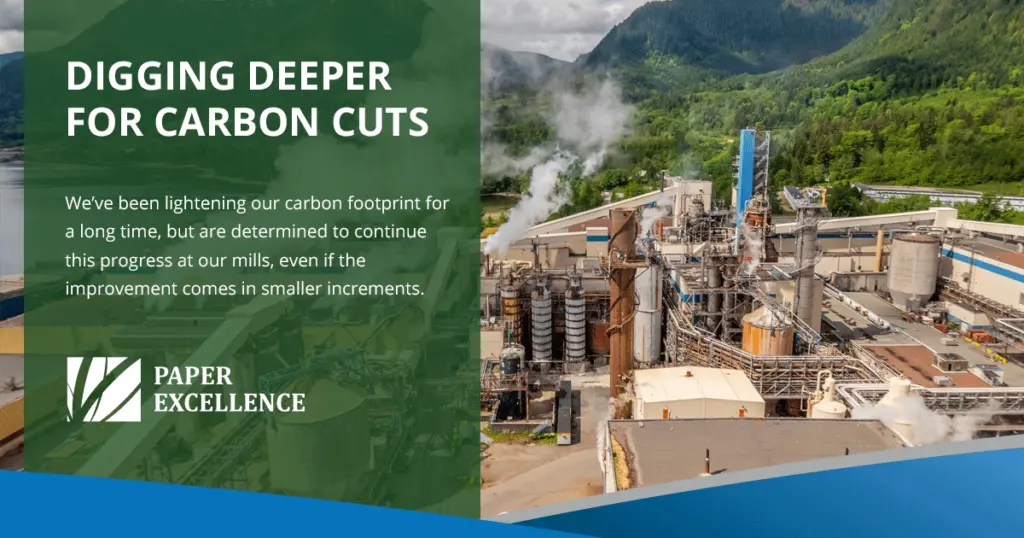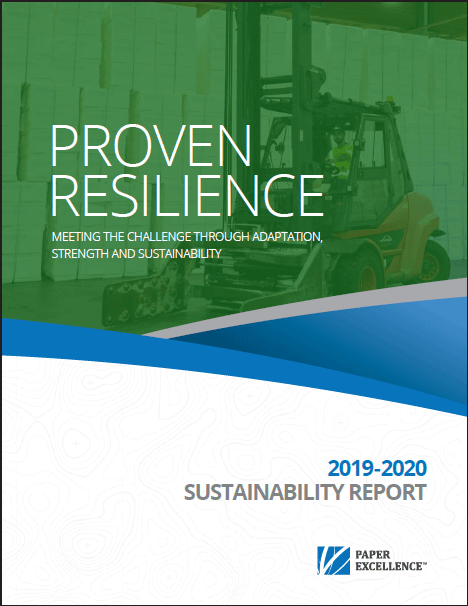
PRACTICES AND PERSPECTIVES
Paper Excellence mills have been cutting their carbon emissions for decades, and the largest-scale and lowest-hanging opportunities have mostly been pursued. But a federal carbon price set to rise from $30 to $170/t by 2050 adds to our motivation to continue to seek out deeper cuts, and further reductions can sometimes yield significant secondary benefits as well.
The Howe Sound mill, for example, is looking at means of stripping odorous organic compounds out of mill condensates. Methanol can account for up to half of this material and could be used to displace natural gas – including at the mill’s lime kiln, its largest remaining carbon-source reduction opportunity.
This would involve capturing a low-carbon fuel, which currently ends up in the mill’s liquid waste stream, and significantly lowering demand on the mill’s effluent treatment system at the same time. Work is ongoing to ensure safe and effective procedures, and to obtain required permit amendments.
The carbon-reduction increments are relatively modest in the case of initiatives like this one, and the strategies needed to realize them have to be increasingly creative and clever. But progress continues, as we do our part to help Canada continue towards its aspiration of a net-zero-carbon economy.
Would you like to learn more about our recent performance and our long-term vision? Visit the Sustainability Report page on our website.
There you can read our full 2019-2020 Sustainability Report, the four-page summary report, and our Practices and Perspective on-the-ground stories.

